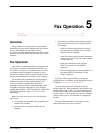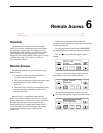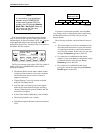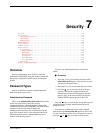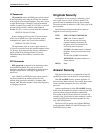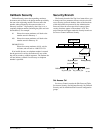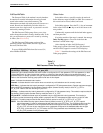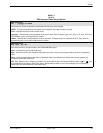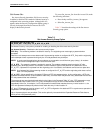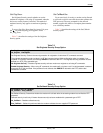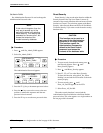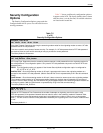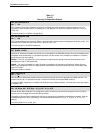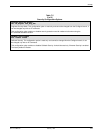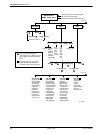
COMSPHERE 3821Plus Modem
7-6 February 1998 3821-A2-GB20-30
Set Answer Sec
Set Answer Security determines if dial access security
is enabled or disabled. This method of inbound security is
configured in the answering modem. Although this also
appears under the Security Configuration Option group, it
can only be changed from the Set Answer Sec LCD
display in the Security branch.
To access Set_Answer_Sec from Set Access Ctrl, make
the following selections:
• Press the key until Set_Answer_Sec appears.
• Select Set_Answer_Sec.
Table 7-2 describes the settings of the Set Answer
Security group option.
Table 7-2
Set Answer Security Group Option
Set Answer Sec: No_Answ_Sec
No_Answ_Sec DTE_Only VF_&_DTE VF_w/_DTE
Set Answer Security. Is the primary method for enabling or disabling the dial access security function.
No Answer Security – Disables the dial access security feature.
DTE Only – The answering modem is enabled for security. The originating user must supply a password when
prompted.
Note that a call attempt never enters data mode if the answering modem is configured for DTE_Only and the originating
caller attempts to enter a password using only the VF-side password entry technique.
NOTE: In modem pooling applications where modems are connected to a multiline hunt group (rotary), all modems
must have this configuration option set to the same value.
VF_&_DTE – The answering modem is enabled for security. The modems negotiate security using the VF-side
password entry technique protocol. If successful, and the Password Type for this particular VF password is set for
VF_&_DTE, a password is requested from the originating user. If successful, the modems connect and can pass data.
NOTE: A call attempt fails if the answering modem is configured for VF_&_DTE and the originating caller does not first
enter a VF-side password.
VF_w/_DTE – Allows specification of related VF-Side and DTE-side password pairs. In this configuration, a DTE-side
password submitted must be a valid Password Table entry, and must match the particular entry associated with the valid
VF-side password that was submitted.
The passwords are associated with each other by their index in the Password Table: VF_plus_DTE passwords occupy
odd-numbered index locations; their DTE_Entry counterparts occupy the even-numbered index locations that
immediately follow. So, for example, if a VF-side password is entered that matches the entry in index location 11, the
DTE-side password subsequently entered must match the entry in index location 12.
VF_plus_DTE passwords must be unique in a VF_w/_DTE configuration. An attached DTE in asynchronous operation is
required for DTE-side password entry.
Up to 10 password pairs are permitted. (This can be optionally increased with the Expanded Password Table feature,
which permits 1500 password pairs.)



